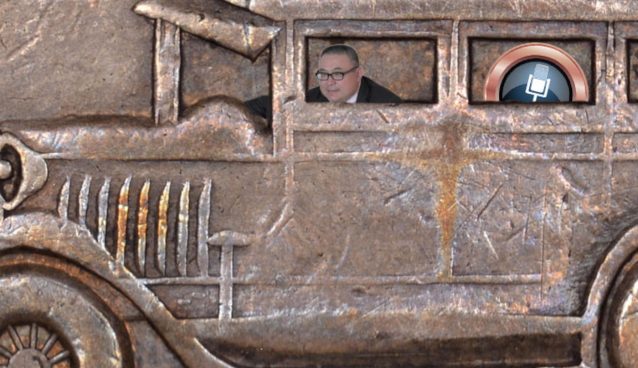Michael Chou Joins Krause Coin of The Year Nominators for 2016 Dated Coins

Krause publications added Michael Chou to the group of nominators for the Krause Coin of the Year Award for coins dated 2016. Michael joined Cliff Mishler, George Cuhaj and myself to supplement Krause’s knowledgeable staff of prominent numismatists when the group gathered in Iola, Wisconson on October 6, 2017 to make nominations.
Michael is the editor of the Journal of East Asian Numismatics. His knowledge and expertise about the coins of Asia, particularly China, Japan and Korea added much needed depth to the process. The result was a more well-balanced group of nominators and a greater understanding of the importance of some of the Asian coins that were nominated.
The Process After Nominations
After the coins are nominated, voting sheets with photographs and brief descriptions are prepared and sent to almost 100 knowledgeable judges from just about every major coin issue country around the world. The broader group of judges consists of artists, mint officials, numismatists museum curators and journalists.
This broader panel selects one winner in each of ten categories. After the votes are tabulated and winners announced, these judges are again called upon to vote among the ten category winners to pick one coin that will receive the distinction of Coin of the Year.
The Nomination Meeting
The eight nominators met at Krause’s headquarters in Iola, Wisconsin on Friday, October 6, 2017. For some of us it was the culmination of a yearlong effort of accumulating data and acquiring newly minted coins that look good in pictures or sound good when described. Just because a coin photographs well does not mean that it is a nice-looking coin when acquired.
Of the 136 coins from around the world dated 2016 that this author acquired with the hope that they would be candidates for nomination, only about half made the cut. Some coins just photograph better then they look in pictures; or, as the year progresses other coins produced by the same mint or other world mints just dwarf them in beauty or significance.
Looking at the coins all year and reading about them all year is what it takes to do justice to the artists, the mints and the many technical people involved in the process of making the coins. When the Krause nominators assemble in October, everyone is well prepared to argue for their favorites and articulate why this coin or that coin should be nominated in a category.
Challenges of the Nomination and Voting Process
One of the greatest challenges in the nomination process is to select the proper category for a nomination and to be sure that one country is not represented by more than one coin per category. If that happens, the voting among the broader panel of judges can become skewed against a country by dividing the vote.
It is also a challenge to strike the right balance between art and history. Sometimes an important commemorative coin that is not artistically compelling fights against coins that just jump off the page with their beauty or clever design. The broader panel of judges has been quite good about seeing past one coin’s beauty for another coin’s importance.
The same challenge exists for the most innovative category. Just because a coin design is clever and creative, does not mean that it is innovative. The broader panel of judges are very knowledgeable and almost always pick out the real innovations over the designs of clever marketers. The selection of the concave cupro-nickel baseball coin from the United States in 2015 was a good example of judges who know that the cupro-nickel alloy was difficult to strike as a curved coin.
While the nomination process is rigorous, challenging and might be compared to making sausage, the right results somehow happen and the best coins make it into one of the categories for presentation to the broader panel of judges.
